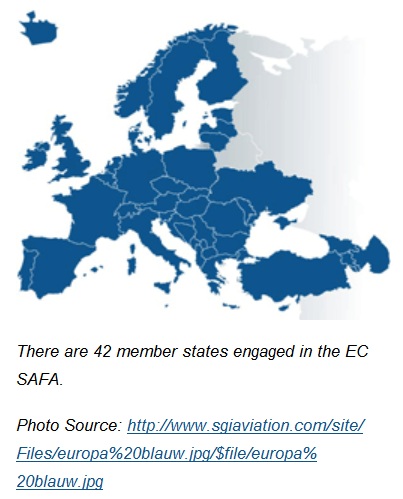Is Your Business Aircraft SAFA Compliant? - Duncan Aviation
I recently asked a customer who logs many hours flying in international skies what he thought was most important when landing on foreign soil. His reply was simply, “make sure your SAFA manual is up to speed.” After a little bit of research and a quick Google search, I found the following link that does a good job explaining the EU Safety Assessment of Foreign Aircraft (SAFA) programme.
http://www.easa.eu.int/approvals-and-standardisation/safety-assessment-of-foreign-aircraft-SAFA.php
 There are currently 42 member states engaged in the EC SAFA: Albania, Armenia, Austria, Azerbaijan, Belgium, Bosnia and Herzegovina, Bulgaria, Croatia, Cyprus, Czech Republic, Denmark, Estonia, Finland, France, Georgia, Germany, Greece, Hungary, Iceland, Ireland, Italy, Latvia, Lithuania, Luxembourg, Malta, Moldova, Monaco, Netherlands, Norway, Poland, Portugal, Republic of Georgia, Romania, Serbia, Slovakia, Slovenia, Spain, Sweden, Switzerland, The former Yugoslav Republic of Macedonia, Turkey, United Kingdom, Ukraine.
There are currently 42 member states engaged in the EC SAFA: Albania, Armenia, Austria, Azerbaijan, Belgium, Bosnia and Herzegovina, Bulgaria, Croatia, Cyprus, Czech Republic, Denmark, Estonia, Finland, France, Georgia, Germany, Greece, Hungary, Iceland, Ireland, Italy, Latvia, Lithuania, Luxembourg, Malta, Moldova, Monaco, Netherlands, Norway, Poland, Portugal, Republic of Georgia, Romania, Serbia, Slovakia, Slovenia, Spain, Sweden, Switzerland, The former Yugoslav Republic of Macedonia, Turkey, United Kingdom, Ukraine.
As you can see, there are a lot of participating countries and if you fly overseas, you will certainly fly in one or more of them. This makes knowing and understanding the SAFA requirements very important to you.
From a maintenance standpoint, SAFA clearly justifies why you need to keep your aircraft in proper compliance. Things like tire wear and hydraulic leaks are all part of the inspection criteria, as well as crew license, procedure manuals, safety equipment for cabin and cockpit, cargo carried on board and overall technical condition of the aircraft.
If your aircraft is dripping oil or any other fluids at a higher flow rate than what is called out in these guidelines, be prepared to have it fixed before you depart. However, the person fixing that leak needs to possess the proper credentials, in other words, SAFA-certified.
The SAFA inspectors have a list of 54 items that can be checked. If not in compliance, many could significantly delay or even ground of your business aircraft. SAFA inspectors are willing to work with you; using good communication goes a long way.
If you’re planning a trip abroad soon, I recommend you find out the correct procedures on writing your own SAFA manual and getting it approved.
Gary Harpster is an Avionics Sales Rep. located at Duncan Aviation's Lincoln, Neb., facility. He specializes in mandates, cockpit upgrades, new technology and high speed data solutions. Gary is currently serving as Vice Chairman of the AEA (Aircraft Electronics Association). His aviation career began in 1977.
Related article: SAFA Required ID Plates for N-Registered Business Aircraft
For more updates from Duncan Aviation, please follow us on Twitter and become a fan on Facebook.
